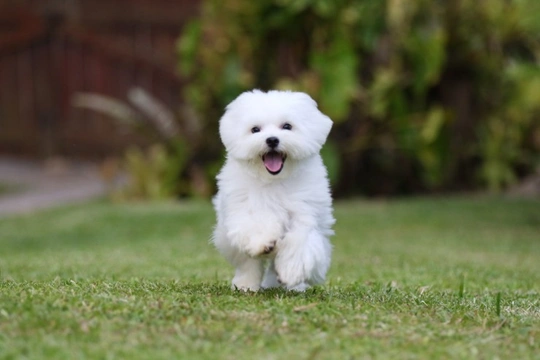
Alternative dog breeds to the Bichon Frise for prospective puppy buyers
Whether you already have a clear idea in your head about the breed or type of dog you wish to own or if you are still exploring your options on the way to making a final decision, it is always wise to open yourself up to the possibility of exploring some alternative breeds too, as you might just find upon further investigation that a different type of dog would be an even better fit for you.
Sometimes, viable alternatives will appear to present themselves naturally when you start to look around and begin to learn more, but if you’re not even sure what type of dogs might be similar or share the same range of core traits as the breed you’re mainly considering, finding alternatives is not always simple.
The Bichon frise is one of a number of small, white fluffy dog breeds that are popular in the UK, and one of the first breeds that come to mind for many people seeking a small companion dog to share their homes. Bichon frises are, as a rule, a great middle-of-the-road pick for people seeking a small toy dog breed as their next pet, and they tend to be healthy, reasonably easy to train, not prone to shedding too much fur, and not overly challenging in terms of their need for exercise.
They are also often a good choice of dog for people who often suffer from allergies, as the low-shedding nature of the Bichon coat means they don’t spread a lot of dander around the home.
However, Bichons also have some downsides too, like all breeds do if you look deeply enough – they are very intolerant of being left alone, like to be the centre of attention at all times, and they need a significant amount of daily brushing and grooming, which is not for everyone.
If you are wondering about what dog breeds might provide a viable alternative to the Bichon frise, in this article we will share our suggestions of three not too dissimilar dog breeds you might want to consider instead. Read on to learn more.
The Toy Poodle
The toy poodle is not too different in size from the Bichon frise, and they share a number of core traits too. Whilst toy poodles can be found in several colours other than the Bichon Frise’s usual white, white toy poodles are common, and the poodle coat itself shares a number of similarities with the Bichon coat as well.
Toy poodles have a very low-shedding coat like the Bichon, which again, can make them a good choice for people who are otherwise commonly allergic to dogs. Poodles also need a reasonable amount of brushing and grooming as a result of this, but clipping the coat can help to reduce the work involved.
Toy poodles are very lively dogs as well as highly intelligent ones, and this makes the toy poodle personality quite different from that of the Bichon frise. Toy poodles need more exercise and can learn and follow a larger number of commands, but they don’t like to be left on their own for too long at a time and so, require a lot of attention as well as interaction and fun, varied exercise.
The Bolognese
The Bolognese dog isn’t as well known as the Bichon frise, but these two separate dog breeds are actually quite closely related, and the Bolognese makes a viable alternative to the Bichon as a result.
Bolognese dogs and Bichon frises have a lot in common, including similar grooming requirements, exercise requirements, and similar flair for training and learning new skills. They are rather more tolerant of being left alone than most Bichons though, and so may be a more appropriate choice of dog for owners that go out to work during the day and pop back in at lunchtime to check on their dog.
Bolognese dogs also tend to be a little more laid back, and more likely to be tolerant of children, although Bichons are also generally great with older and well-behaved children too.
The Maltese dog
The Maltese dog breed is another small, white dog that may provide a viable alternative to the Bichon and the other breeds we’ve mentioned, but their coat style and texture is rather different to the other breeds we’ve mentioned so far.
Maltese dogs have long, straight and silky fur that is very luxurious and tactile, and does of course require regular brushing and grooming to keep it in good condition. However, daily grooming should only take a few minutes, and is not as onerous as it is for the other breeds we’ve mentioned. The Maltese coat is also one that is not prone to shedding too much either.
The Maltese breed as a whole is a very healthy and robust one, despite the dog’s delicate and elegant appearance, and they’re not overly challenging in terms of their need for exercise.
Dogs of the breed are around the middle of the pack in the intelligence stakes, and generally a pleasure to train and manage.
However, this is yet another breed that like many toy dog breeds, really doesn’t tolerate being left alone for too long, and so may not suit people who spend most of the day out at work.
The Maltese dog might be a good Bichon alternative or certainly a breed worth considering, particularly if you are looking for a small white dog that has a longer and smoother coat than the other mentioned breeds.



